One of the best parts of being a cattle farmer is talking to people about how we raise our cattle and facts about beef. Here are some amazing facts about beef and facts about cattle. You can decide which (if any) you want to remember for your next trivia night!
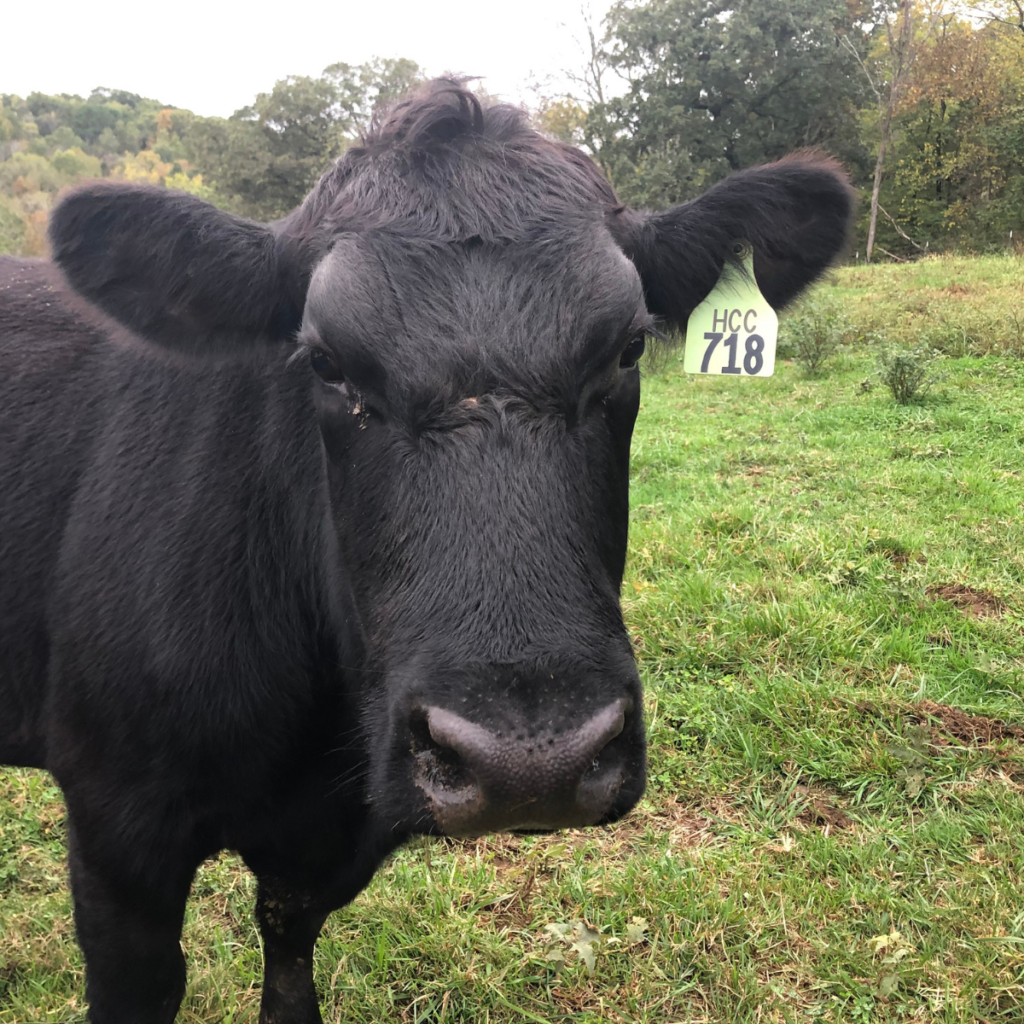
One of the best parts of being a cattle farmer is talking to people about how we raise our cattle and facts about beef.
Some of our customers are specifically interested in facts about beef (the meat you eat). Others, want to know facts about cattle (where the beef comes from). Regardless of what aspect of this topic you’re the most interested in, cattle are fascinating animals. They have an amazing superpower — they turn grass into steak!
Beef is one of the best sources available for 10 essential nutrients.
Three ounces of lean beef can provide a person with 10% of the daily recommended value of vitamin B12, vitamin B6, iron, protein, selenium, zinc, choline, phosphorous, niacin, and riboflavin. Eating beef is one of the healthiest ways to obtain the necessary amounts of protein, vitamin B12, and zinc.
Need iron? Eat beef.
A three-ounce serving of lean beef contains approximately 2.2 mg of iron. To obtain the same amount of iron,, you’d have to eat at least three cups of raw spinach or eight ounces of chicken breast.
Beef supplies the needed protein to build & maintain the body
That same three-ounce serving of lean beef supplies the human body with half of the daily amount of protein needed to build, maintain, and repair body tissue. To obtain the same amount of protein without consuming those three ounces of beef, you’d need to eat 236 calories of raw soy tofu, 670 calories of peanut butter, or 374 calories of black beans.
Beef is the only natural dietary source of vitamin B12
Meat, including beef, is the only natural dietary source of vitamin B12. This essential nutrient is extremely important to the overall health of a human, as it aids in blood formation and the function of both the brain and nervous system.
“Lean” beef includes 29 different cuts
The healthiest beef is lean beef, and meat must meet rigorous government standards in order to be labeled “lean.” Only 29 cuts of beef meet the proper guidelines for being lean. A cut must then be found to have fewer than 10g of fat, fewer than 95mg of cholesterol per 100g of meat, and no more than 4.5g of saturated fat.
Some lean beef cuts are leaner than chicken
12 cuts of beef are leaner than a skinless chicken thigh and meet the USDA’s Labeling Guidelines for lean or extra lean. The leanest cuts of beef include sirloin, chuck, loin, or round, according to the American Heart Association.
Research shows lean beef diets improve cholesterol
According to a study by the American Journal of Clinical Nutrition, lean beef-based diets improved cholesterol levels by about 10 percent — the same amount as the typical low cholesterol diet of fruits, vegetables, and poultry.
Beef grades matter
The USDA Grades beef to signify that it’s high-quality beef that is safe to eat. The beef grades also tell you the amount of tenderness and amount of marbling to expect in the beef. There are eight grades of beef, but you usually only hear about three of these USDA beef grades: Prime, Choice and Select.
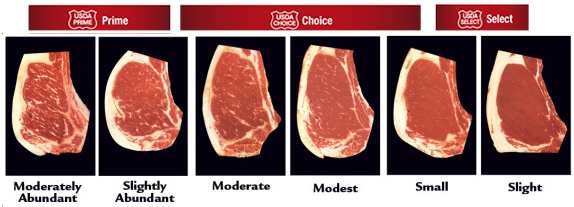
Prime beef is prime
Prime Beef comes from well-fed beef cattle and it has abundant marbling (i.e. fat within the beef). Cattle that are grain-finished will have more marbling than grass-finished beef. You usually find Prime Beef at restaurants and hotels. It’s known for being full of flavor, and very tender and juicy. Only about 2 percent of today’s beef is of the highest USDA grade, or prime, which, has the highest level of marbling.
Choice beef is the most widely available
Choice Graded Beef is very high quality, but has slightly less marbling than Prime. It is very tender and juicy. It is the most widely available grade of beef, and about 50 percent of beef is graded choice by the USDA.
Select beef is typically leaner
Select Graded Beef is typically leaner than the higher grades. It has less marbling, and also lacks some of the juiciness and flavor of the higher graded meat. The USDA grades about 21 percent of beef with the select grade. When cooking Select beef, it’s generally best to marinate before cooking in order to get the maximum tenderness and flavor.
Beef marbling is important, too.
Marbling is what gives beef its flavor, juiciness and tenderness. When cooking, marbling adds flavor and juiciness as the fat melts into the steak. The marbling keeps the meat moist, so natural juices don’t evaporate in the pan.
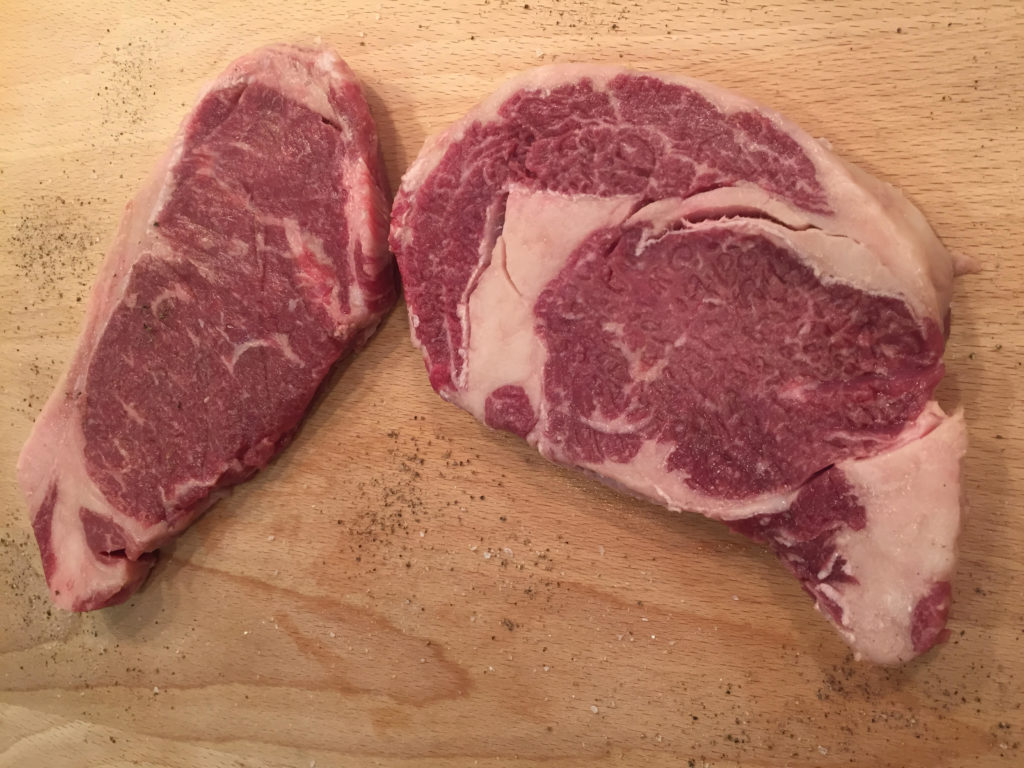
Understand labels, like “Grass Fed” and “Natural”
There are a lot of myths out there about beef and cattle farms. Let’s talk fact vs. fiction so you can make educated food choices for you and your family. We go into lots of detail on terms on our posts about what is grass fed beef and what is grain finished beef. “Grass fed” and “natural” are marketing terms, and they aren’t regulated by the USDA. All cows (even those on feedlots) eat grass at some point of their life, so technically, all cows could be called “grass fed.” This is why it’s important to know where your beef comes from and to know the farmer’s definition of these terms before you buy.
Most beef cattle are pasture fed and raised
The vast majority of beef cattle in the United States are pasture fed, then finished with grain. More specifically, the cattle spend the first year and a half of their lives in pastures eating grass. For the last four to six months of their lives, they live on feedlots and fed grain-based rations balanced by a professional veterinary nutritionist.

What Grass Fed Beef really means
There is a lot of confusion with beef labeling terms. People often ask us what is grass fed beef, and we go into detail on this post. Grass fed beef has more Omega 3 fatty acids than grain-finished beef (3 times as much), but it’s also higher in saturated and transfat (2g more). Grass fed beef has about twice as much CLA, which is a type of naturally occurring trans-fatty acid that improves brain function, causes weight loss and reduces your risk of cancer. It typically has less marbling than grain finished beef.
What “Organic” really means
The term “organic” is a certified term by the USDA. Organic beef may be grain finished, not grass fed. If the cow eats organic grain and is raised on an organic farm, it can be labeled as organic.
“Vegetarian Fed” Beef? Yep, that label exists too
If you ever see beef labeling that says its “vegetarian fed”, please stop and question it. Cows don’t eat meat — ever. This can also be said about chickens, pigs and goats.
What “Grain Finished” beef really means
There is a lot of confusion on beef and what is grain finished beef. Grain finished beef is “finished” on a diet of grains and natural supplements like molasses, corn and soybeans.
What do cattle eat, other than grass?
All cattle (even grass finished cattle) sometimes need to eat something other than grass in order to be healthy, like mineral. Like all animals, cattle require a balance of nutrients for survival. They receive these nutrients through their diet, which provides six basic cattle nutrients: water, carbohydrates, fats, protein, vitamins and minerals.
Ground beef is 40% of beef production
The average U.S. consumer eats approximately 61 pounds of beef per year. Of that, about 40% of the total beef instake is ground beef.
Americans love beef
In 1985, an American ate about 80 pounds of beef per year. In 1995, that number had decreased to about 65 pounds per year.
…so do Argentinans
Argentinans eat more beef than anyone else in the world — they each eat about 140 pounds of beef per year.
The hamburger debuted in St. Louis
The hamburger debuted at the 1904 World’s Fair in St Louis. Here’s one of our fav hamburger seasonings.
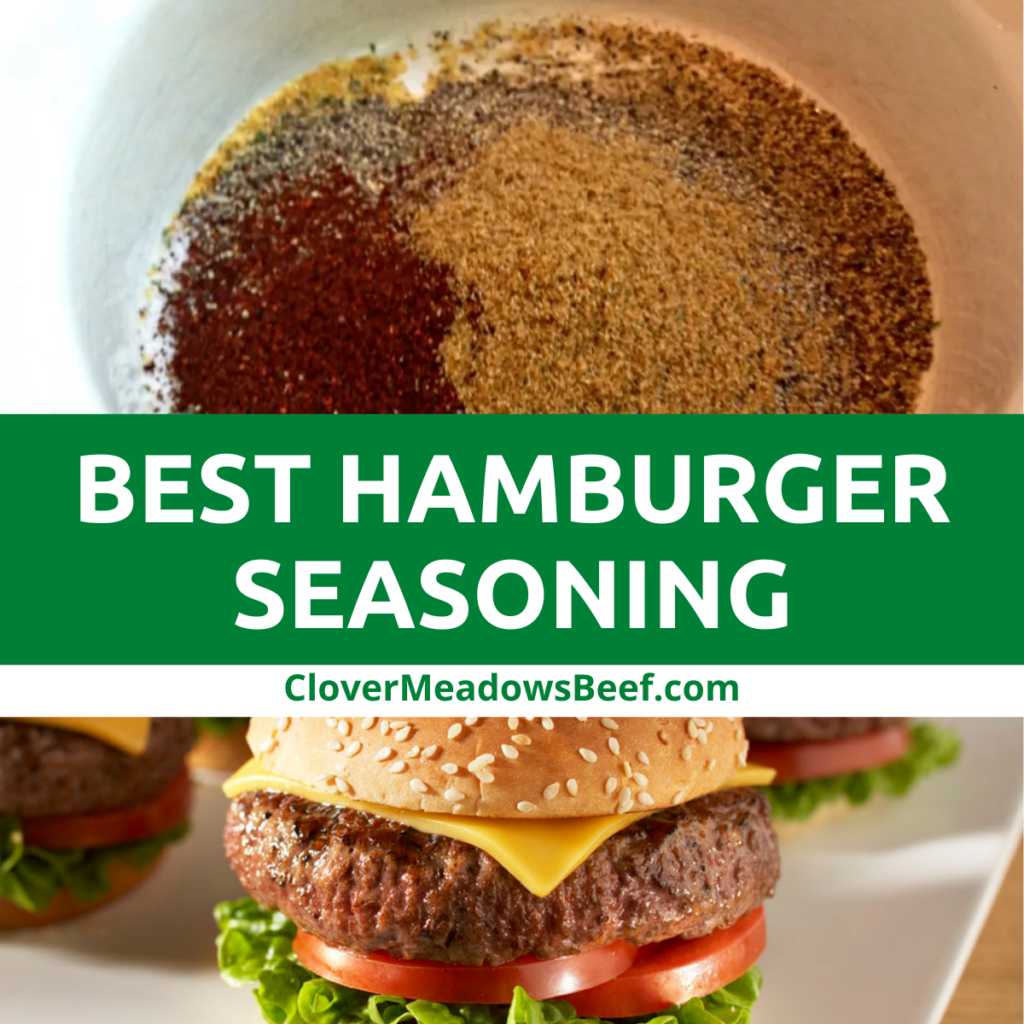
The oldest hamburger chain is from Kansas
The White Castle restaurant was founded in Wichita, Kansas, in 1921. It is the oldest hamburger chain today.
How many hamburers are in a cow?
Almost 1,000 quarter pound hamburgers can be made from the ground beef in one cow. Typically, when you purchase a cow from a cattle rancher or farmer, there will be about 425-450 pounds of edible beef. Of this, 200+ pounds will be ground beef. The remaining beef is in a variety of beef cuts like steaks, roasts, ribs, brisket, etc.
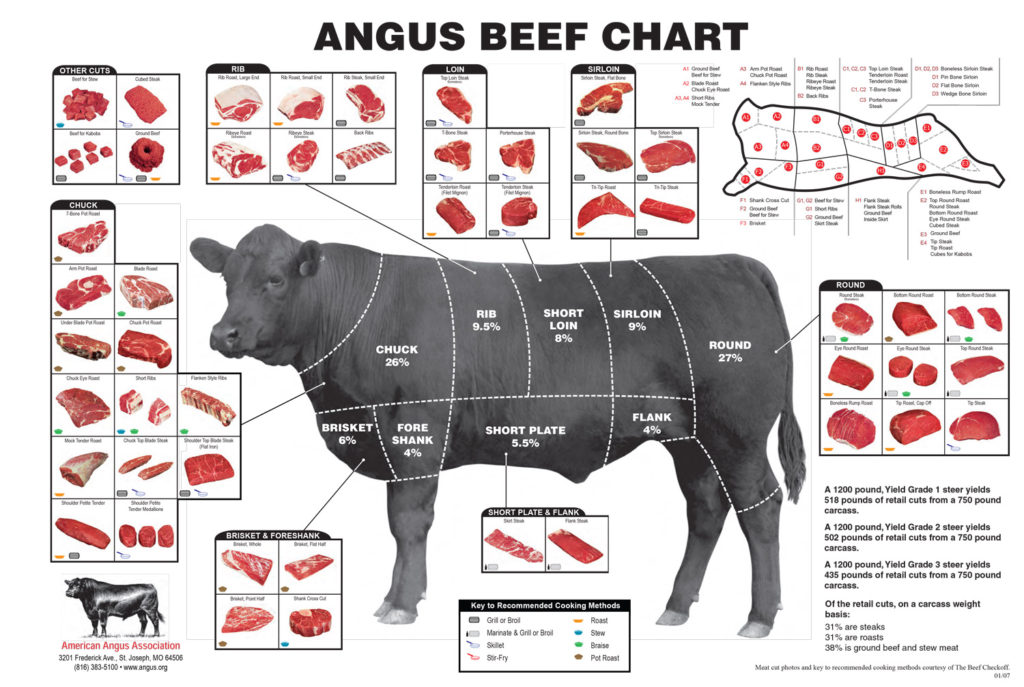
The secret to cooking a great steak is temperature
You probably know the terms rare, medium and well-done. Those terms have to do with the steak’s temperature. It’s not about the color or visual appearance of the beef, contrary to what many people think. Get the full guide here, or check out the chart below.
| Doneness | Temperature | Description |
| Rare | 120-129°F | Cool, bright red center Soft to the touch |
| Medium Rare | 130-134°F | Warm red center Beginning to firm up with red juices |
| Medium | 135-144°F | Warm pink center; outer portions beginning to brown Completely firm to the touch with red juices |
| Medium Well | 145-154°F | Slightly pink center Completely firm to the touch with brown juices |
| Well Done | 155-164 °F | No pink or red Firm to touch |
| Ground Beef | 160 °F | Fully brown throughout with no pink |
Note: The temperatures in this chart are final doneness. You need to pull your beef off the heat about 5-10°F before these temperatures are reached.
Cattle in the U.S.
The first cow arrived in the U.S. in 1611 in Jamestown. In the 1850’s, nearly every family in the U.S. had its own cow.
The U.S. is one of world’s top beef producers
Today, the U.S. produces about 25% of the world’s beef. This is extremely impressive when you consider that the 31.7 million beef cattle in the U.S. only account for 10% of the world’s beef cattle. Other top beef producing countries are Brazil, China, Australia and the European Union.
Missouri is top 3 beef producer in U.S.
Missouri is one of the leading beef producers in the United States, and has ranked among the top three states for years. The state has more beef cows than any other state in America, except for Texas.
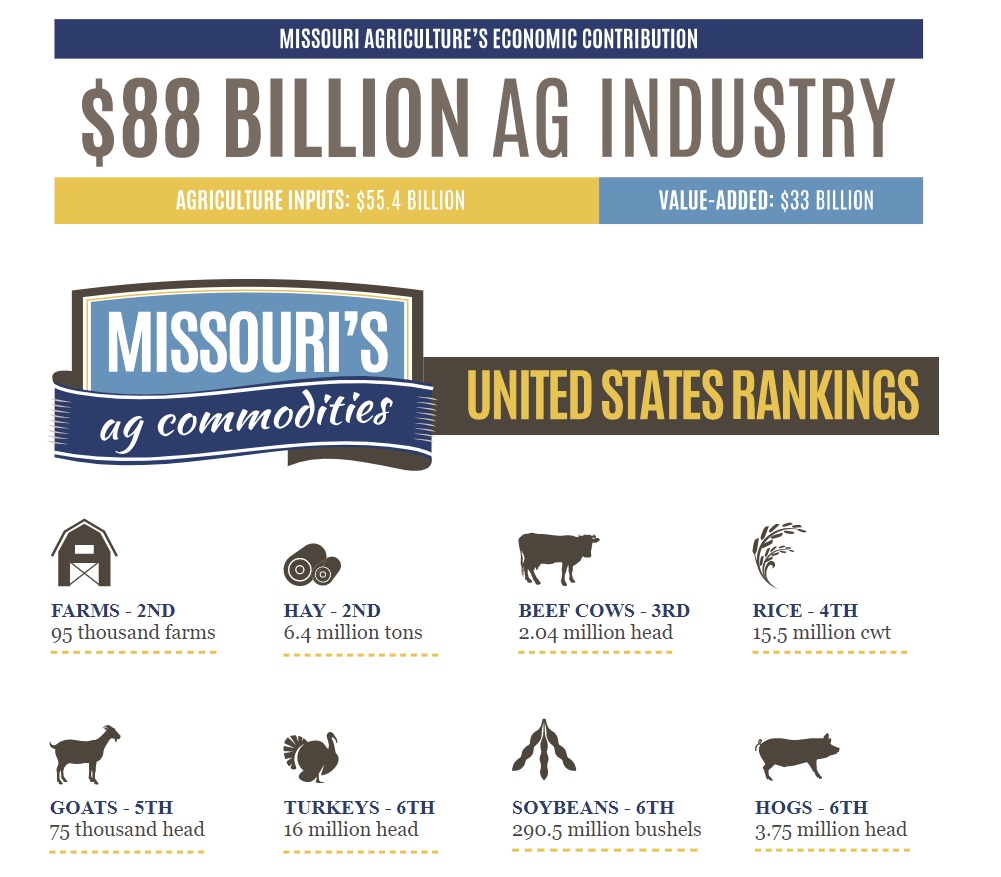
The beef and cattle industry is one of the largest industries in the U.S.
In the United States, the combined value of the beef and cattle industry is approximately $200 billion. The farming of beef cattle is the largest segment of American agriculture.
There are about 800,000 cattle ranchers in the U.S.
According to the U.S. Department of Agriculture, there are approximately 800,000 cattle farmers in the country. More than 97% of beef cattle farms are owned and operated by a single family.
What’s the difference between a cow vs. heifer vs. steer vs. bull vs. calf
The terms cow, heifer, steer, bull, calf and bovine have very specific meanings.
- Cow: A cow is a female animal that has had at least one calf. Using everyday lingo, the cows are the “moms” All cows are female.
- Heifer: A heifer is a female animal that has never had a calf. Once a heifer has a calf, she automatically becomes a cow. In other words, heifers are like “first-time moms”
- Bull: A mature male animal that is used for breeding. The bulls are the “dads.” All bulls are male.
- Steer: A steer is a male animal that has been neutered.
- Bovine: An animal in the cattle group, which includes bison and buffalo
Cattle breeds are diverse
There are over 800 different cattle breeds recognized worldwide. For example, beef breeds are raised for their meat, and dairy cows are raised to produce milk. At Clover Meadows Beef, we raise Angus-based cattle, which is a beef breed.
Cattle have near-panoramic vision
Cows can see almost 360 degrees. As a result of this near-panoramic view, they can watch for predators from all angles. However, they don’t see well straight in front of them and they will typically turn their head to look at you.
Do bulls charge the color red? Yes and no.
Cows can see color. They can even see red. When you see a Matador waving a red flag at a bull, the bull charges because of the flag’s movement, not the color.
Cows have an incredible sense of smell
You may think cows smell bad (and that’s debatable), but did you know they have an incredible sense of smell. Cows have an acute sense of smell and can detect odors up to six miles away.
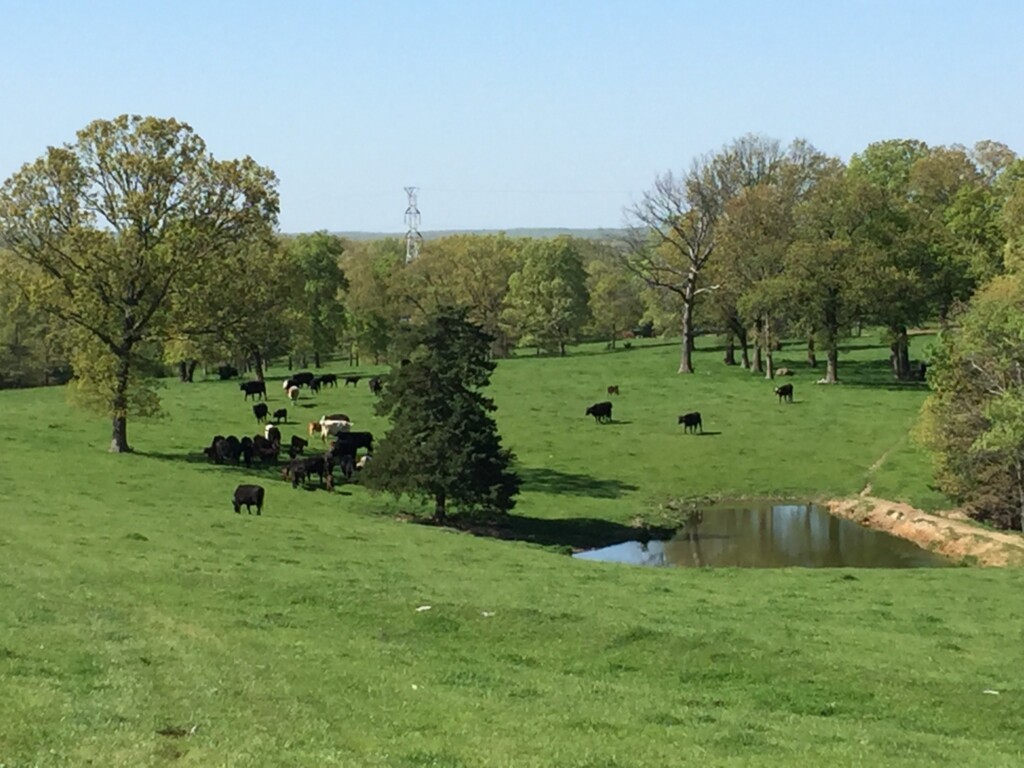
Cows are very social
Have you ever seen cows grouped together in a field? This is because cows are very social and don’t like to be alone. For example, when a cow isolates herself it’s usually because she is sick or about to give birth.
…and they like to lay down
Cows spend about 10 hours a day lying down, and they will stand up and lay down about fourteen times a day. They can also sleep while they’re standing.
Cows can swim
Cattle are great swimmers and have successfully crossed rivers. However, they’re not great sleepers. They only sleep about four hours a day, but you wouldn’t know it since they lay down for 10-12 hours a day.
Cows do not have upper teeth
Cows are unique because they have fewer teeth than most animals. Cattle have 32 teeth — six incisors or biting teeth, and 2 canines in the bottom front of the jaw. They have no upper front teeth. In place of the top incisors, there is a hard leathery pad known as a dental pad. Due to this, cows use their tongue to grasp a chunk of grass and bite it off.
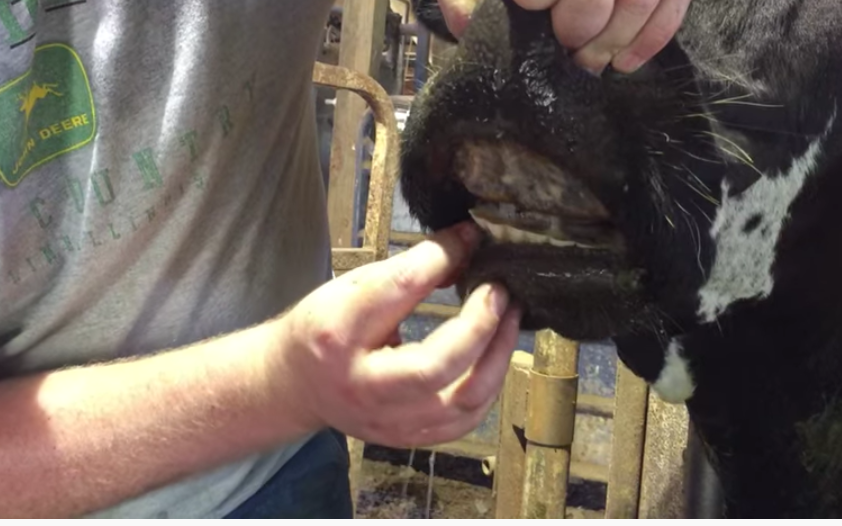
Cattle can turn grass into steak. Wow!
Cows are ruminants, which are cud chewing mammals. Other ruminant animals are sheep, giraffe, goats, and deer, just to name a few. Cows have 4 digestive compartments in one stomach – the rumen (this is where the cud comes from); the reticulum; omasum; and abomasum (this is sort of like a human’s stomach).
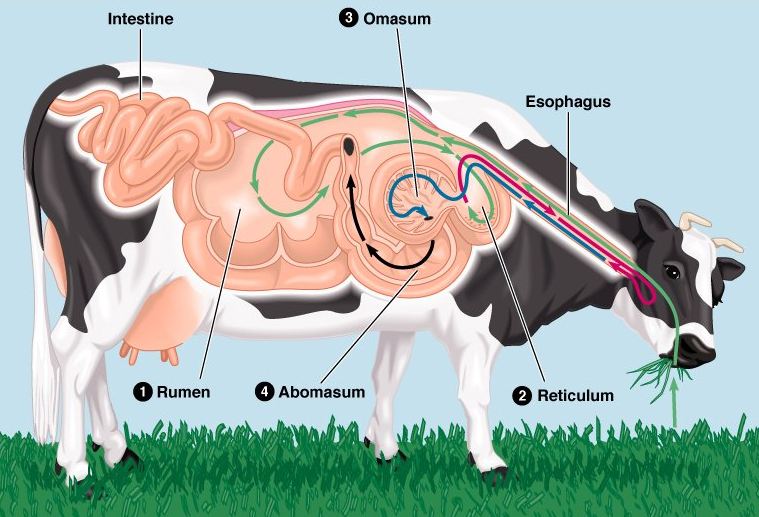
Cows eat about 40 lbs of food a day
The main stomach of a cow, the rumen, holds up to 50 gallons of food that has been partially digested. To put that in perspective, a bathtub can usually hold 30-50 gallons of water. It will consume about 40 pounds of food in a day.
Chewing the cud
A cow will chew for up to eight hours a day, and can move their jaws about 40,000 times a day. It chews about 40-50 times a minute.
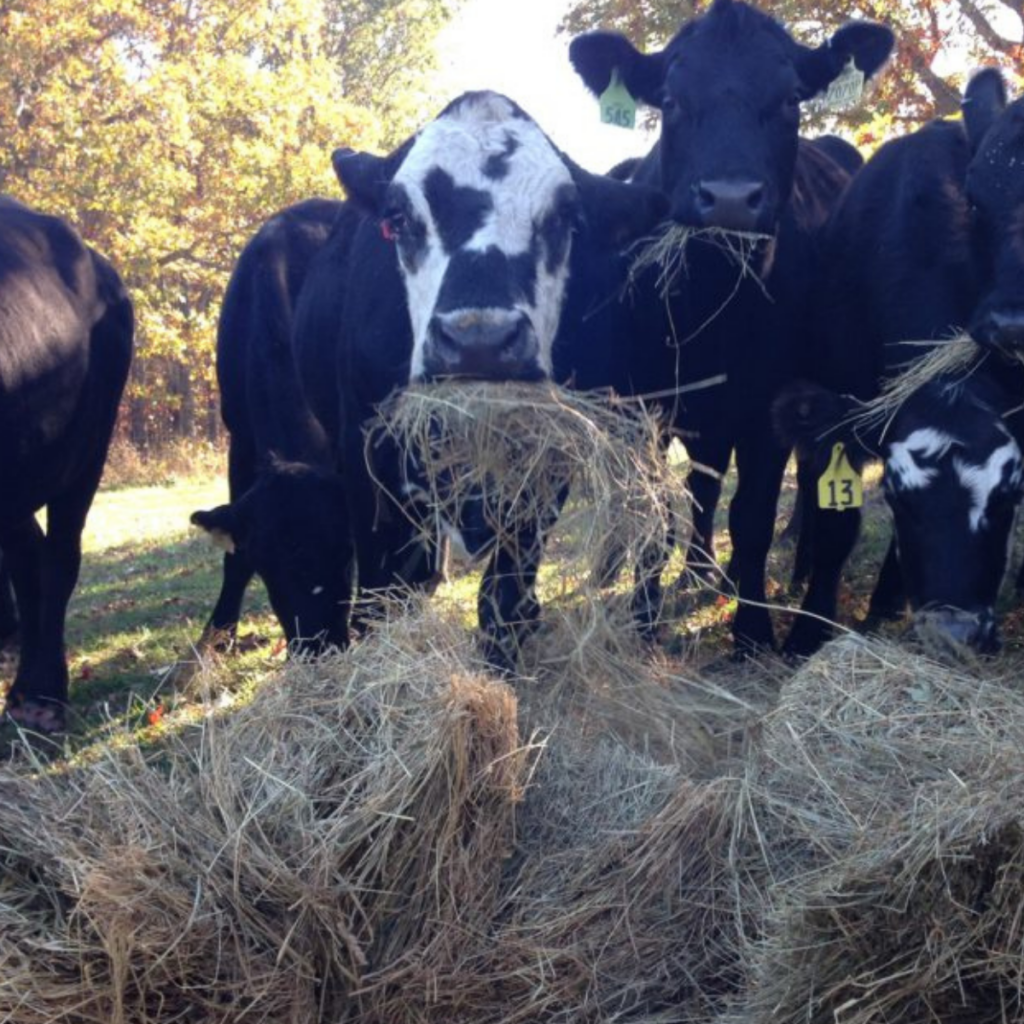
How do cattle eat grass in the winter?
Since grass isn’t available in the winter for cattle to eat in pastures, it’s very important that farmers harvest grass so that cattle can eat it in the winter. That process is called “making hay”. This is a very busy and critical time of the year on any cattle farm. In short, the fields have to produce enough hay in order to feed the animals through the winter.
One cow will eat five bales of hay in a winter
On average, one cow will eat five bales of hay during a typical winter. Each bale of hay weighs 600 pounds. Our cattle love hay and they follow the tractor whenever they see it coming.

Cattle produce more than beef
Raising cattle is about more than beef production. Approximately 99% of the animal is used after it’s processed. Approximately 65% produces meat, while the rest is used for products such as pet food, leather, glue, insulin and other pharmaceuticals, gelatin, cosmetics and soap, among other things.
Your favorite sports equipement is made from cattle
All of your favorite sports equipment is made with from beef cattle. The hide from a single processed steer or heifer can be used to produce 12 basketballs, 144 baseballs, and 20 soccerballs. Furthermore, it takes 3,000 hides to make the number of footballs used each year by the NFL.
No, cutting beef out of our diets would not reduce greenhouse gas emissions
You may have seen reports that cattle contribute to greenhouse gases. Cattle do produce methane, but they only account for 3.3 percent of greenhouse gas emissions in the U.S. A study by the USDA found that beef production was NOT a significant contributor to climate change. (Fossil fuel use is a far bigger culprit.)
What’s that thing in their ear?
Cattle Farmers and Ranchers use ear tags as an animal identification system that helps keep track of important information about each animal, such as birth date, gender, age, weight, etc. Here’s a video of a baby calf getting an ear tag.
How do cattle stay warm in the winter?
The average body temperature of a cow is 102 degrees Fahrenheit. In the winter, cows thick skin and hair is a natural insulator that protects them from the bitter cold.
Thank American soldiers (& beef) for “Uncle Sam”
During the War of 1812, the United States Army received supplies from a variety of individuals, including Sam Wilson, a meatpacker from New York. He labeled his barrels of beef with “U.S.” to indicate U.S. government property, but solders referred to the “U.S.” as Uncle Sam (Wilson). A local newspaper picked up the story, and the name and character of Uncle Sam stuck.
One More Thing!
Do you want to learn more about beef? Join our weekly e-newsletter where we share farm happenings, recipes and beef availability. Sign-up and get a cheat sheet with 9-must-ask questions before buying beef directly from a farmer. Or, we have an entire ebook about beef that goes through purchasing and preparing beef from a cattle farmers perspective.
Here are a few other links you may like:
- Do Cows Have Teeth?
- What everybody ought to know about beef cuts
- Buying a Cow. How Much Beef Is It?
- 7 Steps to Grilling a Steak to Perfection
- How We Raise Our Grass Fed Beef
- Easy Beef Brisket Recipe (oven-roasted)
- The Best Farm Books for Kids
Disclosure: This post contains affiliate links. This means if you click on the link and purchase the item, we will receive an affiliate commission at no extra cost to you. All opinions are our own and we only recommend products that we truly believe in.
We participate in the Amazon Services LLC Associates Program, an affiliate advertising program designed to provide a means for us to earn fees by linking to Amazon.com and affiliated sites. See our disclosure policy for more details.
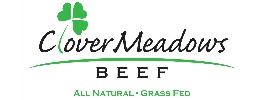


Leave a Reply